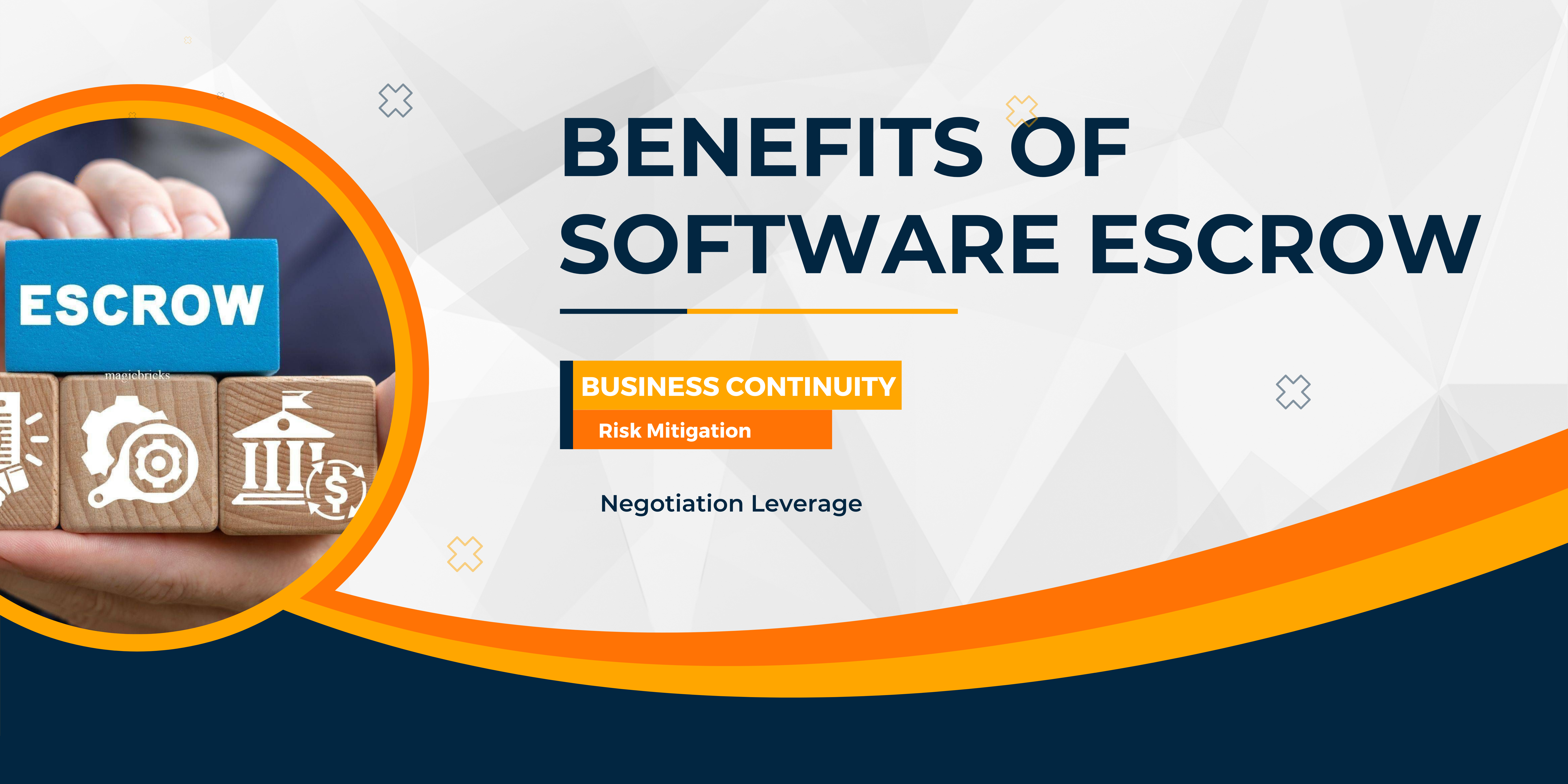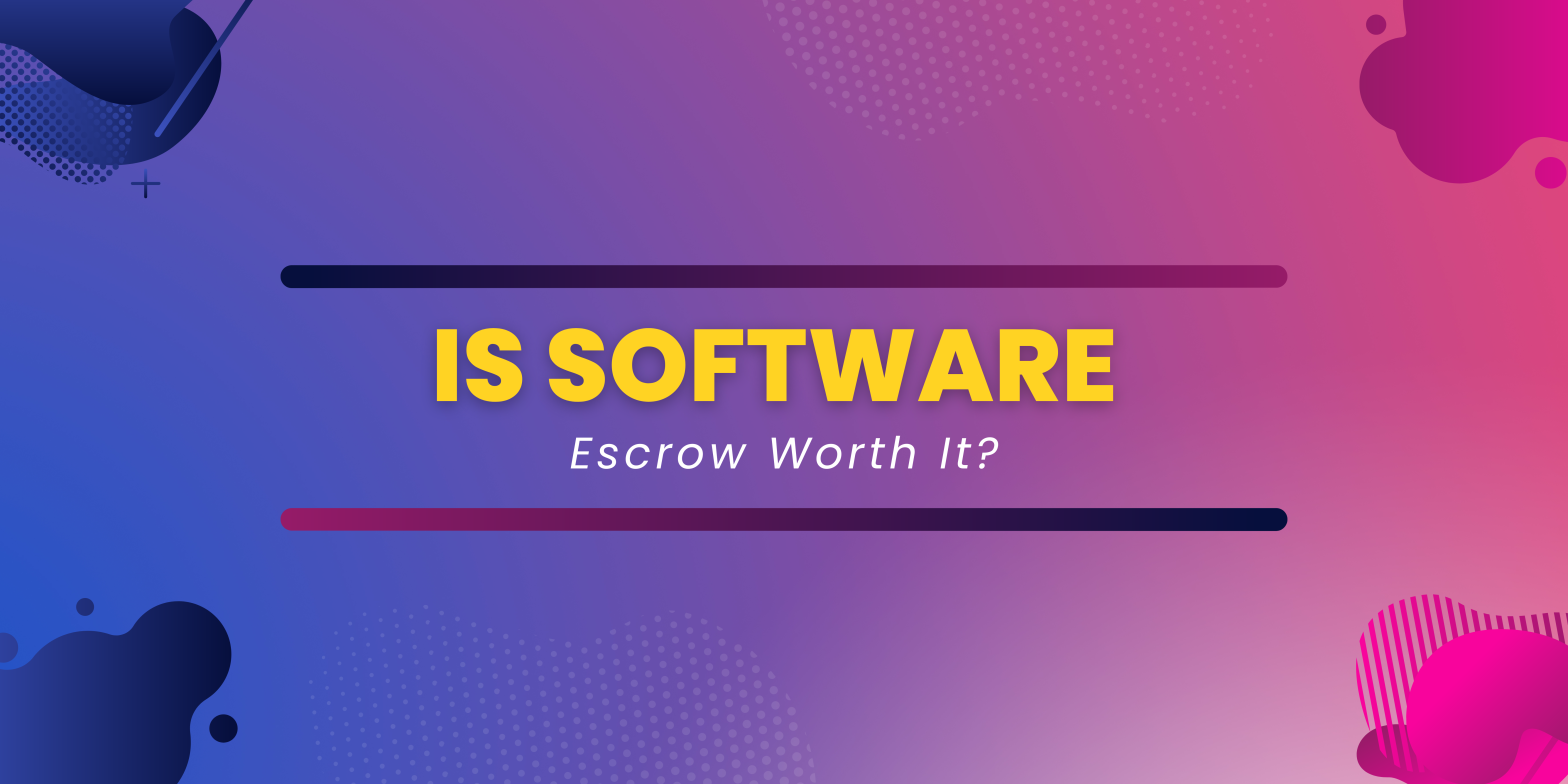When it comes to software escrow, many businesses wonder, “Is software escrow worth it?” In the fast-paced world of software development, businesses often rely on third-party vendors to provide critical software solutions. However, this dependency can introduce risks such as vendor lock-in, lack of support, or even the vendor going out of business. To mitigate these risks, organizations often consider implementing software escrow arrangements. But is software escrow worth it? In this article, we will delve into the concept of software escrow, assess its benefits and risks, and help you determine whether it is a worthwhile investment for your business.
Understanding and Is software escrow worth it?
Software escrow is a legal and financial arrangement that involves a software vendor, the beneficiary (typically the software licensee), and a trusted third-party escrow agent. The software vendor deposits the source code, documentation, and other critical assets of the software application into an escrow account. The escrow agreement outlines the conditions under which the beneficiary can access and utilize these assets.
Benefits of Software Escrow
- Business Continuity: One of the primary benefits of software escrow is ensuring business continuity. If the software vendor ceases operations or fails to provide ongoing support, the beneficiary can access the deposited materials to continue using and maintaining the software application. This prevents disruptions to business operations and minimizes potential financial losses.
- Risk Mitigation: Software escrow mitigates the risks associated with vendor dependency. It provides a safety net in case the vendor fails to fulfill their obligations, faces financial difficulties, or discontinues the software product. By having access to the source code and documentation, the beneficiary can engage third-party experts or internal teams to provide support, maintenance, and modifications as needed.
- Investment Protection: Organizations invest significant resources in acquiring and implementing software applications. Software escrow protects this investment by ensuring continued access to critical assets. It enables businesses to maintain and enhance the software’s functionality, adapt it to changing needs, and maximize the return on their investment.
- Negotiation Leverage: Having a software escrow arrangement in place can provide the beneficiary with negotiating leverage when entering into agreements with software vendors. It demonstrates that the organization is proactive about risk management and has a contingency plan in case of vendor-related issues. This can lead to more favorable terms and conditions during contract negotiations.

Risks and Considerations
While software escrow offers significant benefits, it is essential to consider the potential risks and challenges associated with its implementation:
- Cost: Software escrow arrangements involve fees associated with establishing and maintaining the escrow account. The costs may vary depending on factors such as the complexity of the software, the size of the deposited materials, and the chosen escrow agent. Organizations need to assess the cost-effectiveness of software escrow in relation to the potential risks they face.
- Escrow Agent Reliability: The trustworthiness and reliability of the escrow agent play a crucial role in software escrow management. It is vital to select a reputable and experienced escrow agent who can effectively safeguard the deposited materials and comply with the terms of the escrow agreement. Thorough due diligence and proper selection criteria are essential to mitigate this risk.
- Release Triggers and Conditions: The escrow agreement should clearly define the triggers and conditions for releasing the deposited materials. Ambiguous or poorly defined release conditions can lead to disputes and delays in accessing the software assets when needed. It is crucial to ensure that the release conditions align with the potential risks and scenarios that may arise.
- Source Code Usability and Maintenance: Access to the source code does not guarantee immediate usability or ease of maintenance. Depending on the complexity of the software and the availability of skilled resources, utilizing the source code effectively may require additional expertise and effort. Organizations need to assess their capabilities and resources for effectively utilizing the source code and maintaining it over time.
- Changing Technology Landscape: The software industry is constantly evolving, with new technologies and frameworks emerging regularly. In such a dynamic landscape, the value and relevance of escrowed source code may diminish over time. Organizations should periodically review and update their escrow agreements to ensure they align with the current state of technology and the software ecosystem.
Making the Decision
To determine whether software escrow is worth it for your organization, consider the following factors:
- Risk Assessment: Evaluate the potential risks associated with vendor dependency and the criticality of the software to your business operations. Assess the financial and operational impact of disruptions or discontinuation of software support.
- Cost-Benefit Analysis: Compare the cost of implementing and maintaining software escrow with the potential risks and benefits it offers. Consider factors such as the complexity of the software, the financial investment, and the strategic importance of the application.
- Vendor Evaluation: Assess the reliability and stability of your software vendor. Consider their track record, financial health, and the level of ongoing support they provide. A trustworthy and responsive vendor may reduce the need for software escrow.
- Alternative Risk Mitigation Measures: Explore other risk mitigation strategies, such as negotiating robust service level agreements (SLAs), seeking alternative software vendors, or utilizing cloud-based software solutions that offer built-in redundancy and continuity features.
- Limited Scope: Software escrow primarily focuses on protecting the source code and associated documentation. However, it may not cover other important aspects of the software ecosystem, such as dependencies on third-party libraries or hardware components. Organizations need to assess the comprehensiveness of the escrow arrangement and consider additional measures to mitigate risks associated with these dependencies.
Conclusion
Is software escrow worth it? Absolutely. Software escrow can be a valuable risk mitigation strategy for businesses heavily dependent on third-party software vendors. It offers benefits such as business continuity, risk mitigation, investment protection, and negotiation leverage. However, the decision to implement software escrow requires a careful evaluation of the associated costs, risks, and alternative measures. Organizations should conduct a comprehensive risk assessment, evaluate the vendor’s reliability, and weigh the potential benefits against the investment required. With proper due diligence and a clear understanding of the benefits and risks, software escrow can be a worthwhile investment to ensure the uninterrupted availability and support of critical software applications. By carefully considering the potential risks, cost-effectiveness, and vendor reliability, you can determine if software escrow is worth it for your organization’s long-term stability and protection.
Discover the value of software escrow for your business. Assess the benefits and risks. Make an informed decision to safeguard your software investments. Is software escrow worth it? Find out now!
